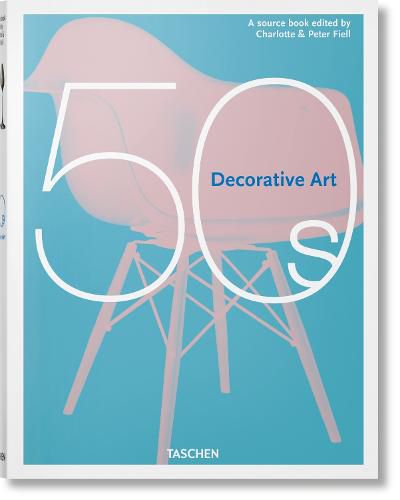Readings Newsletter
Become a Readings Member to make your shopping experience even easier.
Sign in or sign up for free!
You’re not far away from qualifying for FREE standard shipping within Australia
You’ve qualified for FREE standard shipping within Australia
The cart is loading…






Published annually from 1906 until 1980, Decorative Art, The Studio Yearbook was dedicated to the latest currents in architecture, interiors, furniture, lighting, glassware, textiles, metalware, and ceramics. Since the publications went out of print, the now hard-to-find yearbooks have become highly prized by collectors and dealers. TASCHEN’s Decorative Art 50s explores the spirit of optimism and the fervent consumerism of the decade. Technology and construction had been enervated by research during the war and these discoveries could now be applied in peacetime. The popularization of plastics, fiberglass, and latex literally shaped the decade. Rising incomes and postwar rebuilding on both sides of the Atlantic led to a massive housing boom in both the suburbs and inner cities, and these new homes reflected the new style. While European design was extraordinarily inventive, American design was looking to an idealized vision of the future-between them a modern idiom was developed that can be seen vividly on these pages. This overview of the decade includes the work of such famous innovators as Charles and Ray Eames, George Nelson, Hans Wegner, and Gio Ponti.
$9.00 standard shipping within Australia
FREE standard shipping within Australia for orders over $100.00
Express & International shipping calculated at checkout
Published annually from 1906 until 1980, Decorative Art, The Studio Yearbook was dedicated to the latest currents in architecture, interiors, furniture, lighting, glassware, textiles, metalware, and ceramics. Since the publications went out of print, the now hard-to-find yearbooks have become highly prized by collectors and dealers. TASCHEN’s Decorative Art 50s explores the spirit of optimism and the fervent consumerism of the decade. Technology and construction had been enervated by research during the war and these discoveries could now be applied in peacetime. The popularization of plastics, fiberglass, and latex literally shaped the decade. Rising incomes and postwar rebuilding on both sides of the Atlantic led to a massive housing boom in both the suburbs and inner cities, and these new homes reflected the new style. While European design was extraordinarily inventive, American design was looking to an idealized vision of the future-between them a modern idiom was developed that can be seen vividly on these pages. This overview of the decade includes the work of such famous innovators as Charles and Ray Eames, George Nelson, Hans Wegner, and Gio Ponti.